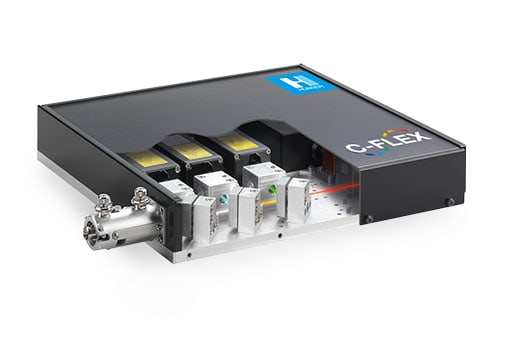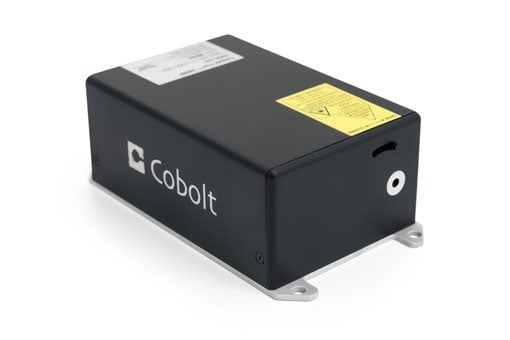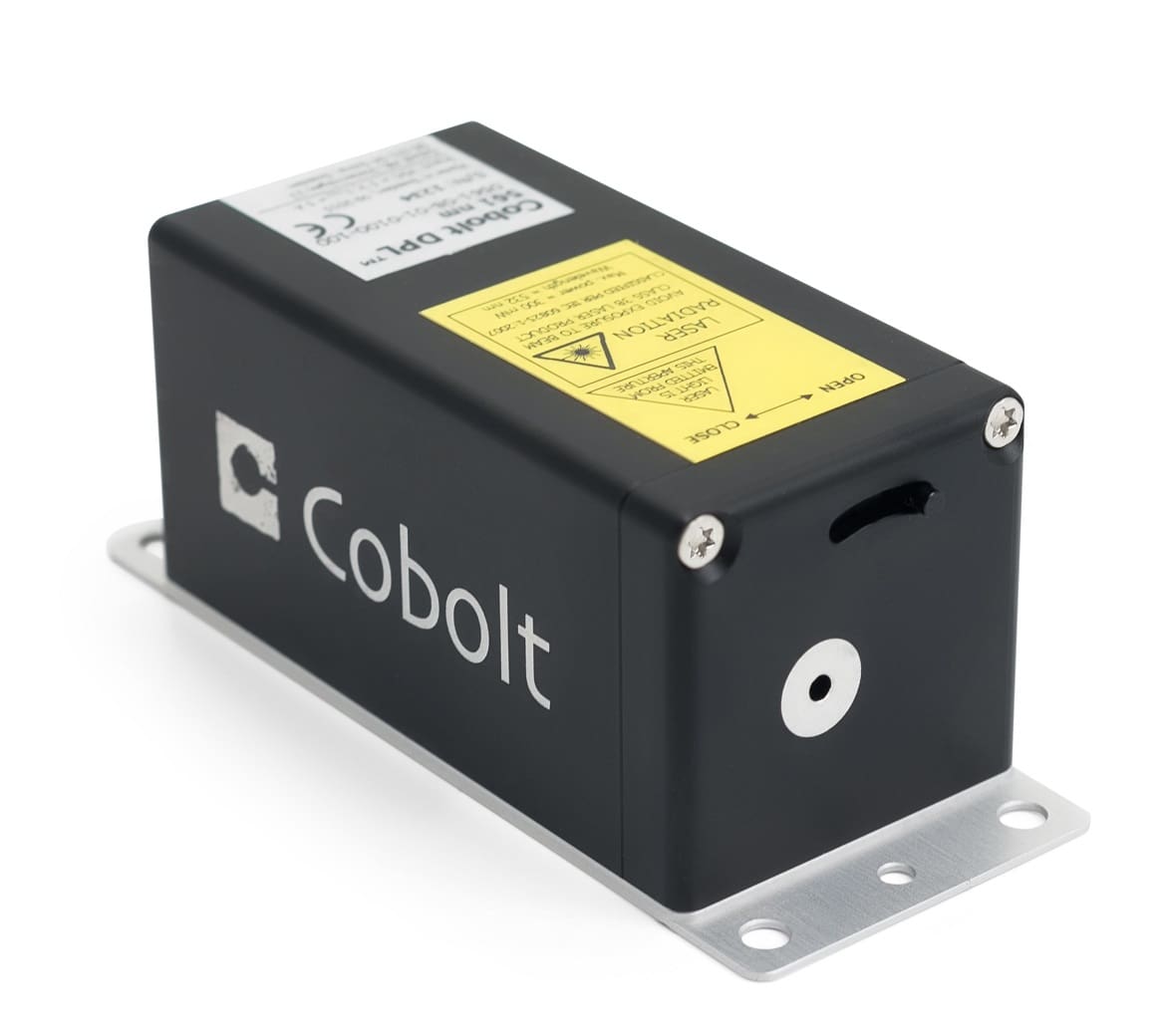Lasers for Flow Cytometry
Flow cytometry enables detection and analysis of a variety of cellular properties in a large cell population and is a critical technology for both clinical medicine and basic research in the life sciences. Lasers are used in flow cytometry as the excitation source of fluorophore-labeled cell samples. Often, multiple laser colors are needed in order to characterize multiple cellular properties.
In the cytometry process, a cell population sample labelled with fluorophores is suspended in a fluid and then the cells, one by one, are made to pass through one or more laser beams of different colors at very high speed. The physical and biological properties of the cells are characterized by measuring the scattering effects as well as emitted fluorescence signals. The cells are guided through the laser beams either as a hydro-dynamically focused jet stream or by using microfluidic devices. The signal data generated is computer processed and usually presented in single-dimension histograms, or in bivariate dot plots to separate out, detect, and quantify different sub-populations of cells in the sample. More advanced cytometry systems are also able to physically separate and thereby purify cell populations of interest based on their optical properties by use of Fluorescence-Activated Cell Sorting (FACS).

Typical flow cytometry principle. Wikipedia
Multiple laser wavelengths are used in order to increase the amount or type of information that can be detected from the cell sample. The more laser wavelengths the cytometer is equipped with, the more fluorescence colors, and thereby more cellular properties of the sample can be characterized simultaneously.
The laser beams in a flow cytometer are often formed into a stack of light sheets with highly elliptical or top-hat shaped intensity cross-sections, in order to make sure that every cell is illuminated with the same light intensity, even if they do not hit the laser beam at exactly same position. This is important for the instrument’s CV (coefficient of variation) value, which is a measure of repeatability and reliability, and how small or dim cell populations can be resolved. Other important laser parameters for highest cytometer performance include; low intensity noise, stable power and beam pointing and perfect beam quality.
Flow cytometry is an important tool in hematology and immunology and has allowed detailed studies of the dozens of cells types that make up the immune system. This is possible by using antibodies targeted against specific protein receptors on the cell surfaces. When the antibodies are coupled to a fluorescence label tag they can be detected on the cell surface when illuminated with the specific laser wavelength and thereby enabling rapid diagnosis of various autoimmune and disease conditions. There are also fluorescence sensors that can measure cell membrane integrity, electric potential, mitochondrial function and calcium concentration. Other labels, such as fluorescent proteins, can be used to detect the gene expression in cells. Other applications of cytometry technology include virology, stem cell therapy, sperm sorting, plant biology and marine biology.

Examples of bivariate 2D plots of cytometry data.
At HÜBNER Photonics our broad portfolio of reliable laser products can meet almost all of laser requirement for flow cytometry. In particular, the Cobolt Skyra™ offers a unique multi-line solution with up to four lasers lines permanently aligned out of ultra-compact single-box device. The lasers can be delivered with free-space beams or with fiber delivery. Assembly of all laser and beam-stearing components on a single temperature-controlled platform using HTCure™ Technology ensures a very high level of beam pointing stability in free beams and power stability in fiber delivery. We can also offer customized beam solutions including stacked beams and top-hat intensity cross sections.
The Cobolt 04-01, Cobolt 05-01 and Cobolt 06-01 Series offer higher power laser sources across all individual wavelengths typically used in flow cytometry, including the UV range. The lasers are characterized by very low noise and perfect TEM00 beams. All these lasers can be combined into the C-FLEX laser combiners platforms to make compact and easy-to-use multi-color engines.
See related products

Cobolt Skyra™
A revolutionary multi-line laser platform
Wavelength: 405 nm – 685 nm
Power: 50 mW, 100 mW
Applications: Microscopy, flow cytometry

C-FLEX
The compact and flexible laser combiner
Wavelength: 375 nm – 1064 nm
Power: 50 mW – 1000 mW
Applications: Microscopy, Raman, holography

Cobolt 05-01 Series
High power, single frequency, CW diode pumped lasers
Wavelength: 320 nm – 1064 nm
Power: 10 mW – 3000 mW
Applications: Holography, Raman, microscopy, flow cytometry, research

Cobolt 06-01 Series
Plug & play modulated CW lasers
Wavelength: 375 nm – 1064 nm
Power: 40 mW – 400 mW
Applications: Microscopy, flow cytometry, optogenetics

Cobolt Rogue™ Series
High Power, CW diode pumped lasers
Wavelength: 640 nm
Power: 1 W
Applications: Super resolution microscopy
Editorial Lasers for flow cytometry are small, solid, and reliable Laser Focus World 2019
Editorial Orange Laser Sources for Life Sciences Research Biophotonics 2010
Editorial Yellow lasers for flow cytometry, ISAC conf 2006
Apps note Cobolt Zouk 355 nm for flourescence microscopy and flow cytometry

